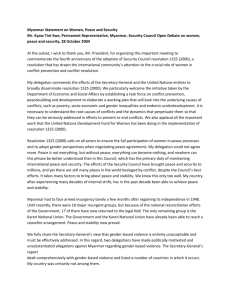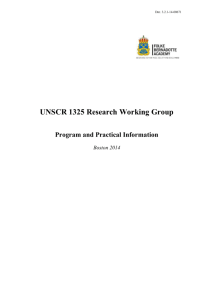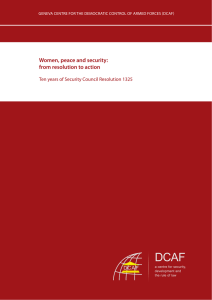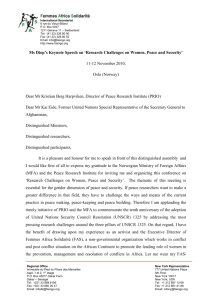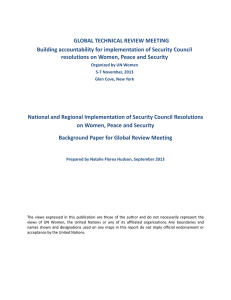Security Council Resolution 1325: Is it only about war
advertisement
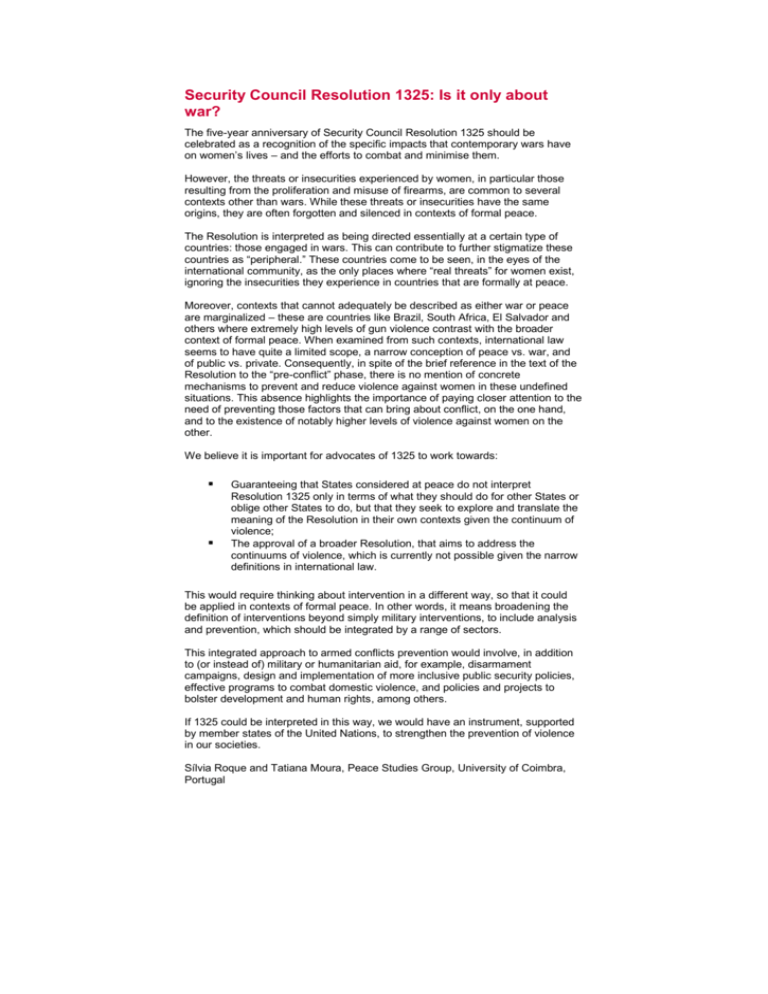
Security Council Resolution 1325: Is it only about war? The five-year anniversary of Security Council Resolution 1325 should be celebrated as a recognition of the specific impacts that contemporary wars have on women’s lives – and the efforts to combat and minimise them. However, the threats or insecurities experienced by women, in particular those resulting from the proliferation and misuse of firearms, are common to several contexts other than wars. While these threats or insecurities have the same origins, they are often forgotten and silenced in contexts of formal peace. The Resolution is interpreted as being directed essentially at a certain type of countries: those engaged in wars. This can contribute to further stigmatize these countries as “peripheral.” These countries come to be seen, in the eyes of the international community, as the only places where “real threats” for women exist, ignoring the insecurities they experience in countries that are formally at peace. Moreover, contexts that cannot adequately be described as either war or peace are marginalized – these are countries like Brazil, South Africa, El Salvador and others where extremely high levels of gun violence contrast with the broader context of formal peace. When examined from such contexts, international law seems to have quite a limited scope, a narrow conception of peace vs. war, and of public vs. private. Consequently, in spite of the brief reference in the text of the Resolution to the “pre-conflict” phase, there is no mention of concrete mechanisms to prevent and reduce violence against women in these undefined situations. This absence highlights the importance of paying closer attention to the need of preventing those factors that can bring about conflict, on the one hand, and to the existence of notably higher levels of violence against women on the other. We believe it is important for advocates of 1325 to work towards: Guaranteeing that States considered at peace do not interpret Resolution 1325 only in terms of what they should do for other States or oblige other States to do, but that they seek to explore and translate the meaning of the Resolution in their own contexts given the continuum of violence; The approval of a broader Resolution, that aims to address the continuums of violence, which is currently not possible given the narrow definitions in international law. This would require thinking about intervention in a different way, so that it could be applied in contexts of formal peace. In other words, it means broadening the definition of interventions beyond simply military interventions, to include analysis and prevention, which should be integrated by a range of sectors. This integrated approach to armed conflicts prevention would involve, in addition to (or instead of) military or humanitarian aid, for example, disarmament campaigns, design and implementation of more inclusive public security policies, effective programs to combat domestic violence, and policies and projects to bolster development and human rights, among others. If 1325 could be interpreted in this way, we would have an instrument, supported by member states of the United Nations, to strengthen the prevention of violence in our societies. Sílvia Roque and Tatiana Moura, Peace Studies Group, University of Coimbra, Portugal





